SKODA YETI MONTE CARLO LONG-TERM TEST REVIEW
Sixth long-term test review: The Verdict
That’s it. The final curtain call. The end. Fin. Yes, there’s a Skoda Yeti shaped gap in our car park, as ‘our’ red and black Monte Carlo has left the building. So, what did we think of Skoda’s crossover after months of driving, and most importantly of all, would we recommend the Yeti to you?
We’ll certainly get to that in due course, but first, we thought it would be fitting to ask the Car Keys team for their final thoughts on KS15 JMX.
Andy Goodwin, managing editor
“The original Yeti blew me away when I first drove it way back in 2009. I couldn’t believe such a practical car was also such fun to drive. Not everyone was a fan of the new nose when it was facelifted, but I think the Monte Carlo edition with a contrasting roof colour, is the best-looking Yeti so far.
“It’s still just as fun to drive as ever, and I love Skoda’s attention to detail. Little touches like the hooks in the boot for your shopping bags might seem fairly insignificant, but if like me, you seem to always be popping to the local supermarket, they make a big difference.
“The interior is starting to show its age just slightly, but it’s well laid-out and in the face of fierce crossover competition, the Yeti is still amongst the class leaders, which is deeply impressive.”

Richard Bush, senior writer
“The Yeti is one of those cars that really can do a bit of everything. It may not be perfect in every department, but it certainly impresses in all the right areas. It can handle itself in adverse conditions, it’s practical, well-built and has a great range of engines and kit. Skoda’s Simply Clever features help when it comes to convenience as well. The removable rear seats for example are a great feature.”
“Sure, it’s not what you would call a downright stylish car, but our Monte Carlo paint job certainly helped. Speaking of the Monte Carlo model, you don’t necessarily have to go for something like this in the Yeti range to reap its benefits. My only criticism is probably its leftfield design and conservative interior. But when a car ticks so many boxes, it’s hard to look at those things as defining factors.”
Ryan McElroy, staff writer
“Although ‘fun family car’ can often seem like something of a misnomer, the Skoda Yeti genuinely trumps pretty much any other car in its class with its nimble characteristics, practicality and four-wheel drive.
“From its funky styling to its eager little turbo engine, the Yeti is a car that’s full of personality. It’s the sort of car that if you take it to Tesco and realise on the way home that you’ve forgot the eggs, you don’t even mind because it means you just get to spend more time in it.
“Some rivals might be sleeker looking or have a slightly more up to date interior, but as an all-round package the Yeti is virtually unbeatable. I’d be a liar if I said I hadn’t gotten attached to the little thing.”
Impressed
So, it’s fair to say we were all quite emphatic in our praise for the boxy Skoda. It’s a car which could be the consummate all-rounder, performing strongly in almost every area. This means, while it might not appeal to a dyed-in-the-wool driving enthusiast or someone after a poseur-mobile, for most families and day-to-day drivers it strikes a perfect balance between utility, comfort and performance.
Would we recommend it? Of course we would. The Yeti perfectly encapsulates the Skoda brand’s best qualities, and the car maker’s forthcoming large SUV has a lot to live up to.
Fifth long-term test review: Choosing the right Yeti for you
Richard Bush
So, let’s say you’ve decided that you like the Yeti. Maybe it is its unique exterior styling, removable rear seats or engine range that has taken your fancy. But how much is it going to cost you? Well, that will all depend on what equipment level you choose and whether you indulge in things like optional extras and creature comforts.
But there can be more than meets the eye when it comes to choosing the likes of air-con, Bluetooth or sat-nav. Some equipment may not be worth the money, whereas others may actually add value to its price tag when it comes to resale time.
Trim levels
First, let’s take a step back and look at the price range. In order of affordability, Yeti models are as follows: Yeti S (£17,000), Yeti SE (£18,550), Yeti SE L (£20,380) and Yeti Monte Carlo (£24,375). Slightly separate to the core model range is the Yeti Outdoor model, which is focused more towards off-roading but can also be specified in the above trim levels – except for the Monte Carlo which is a standalone model.
Go for the Yeti S model and standard kit highlights include a five-inch touchscreen which is Bluetooth, USB and SD card compatible, manual air-con, a leather steering wheel and cloth upholstery. Electrically adjustable heated door mirrors are also standard, along with a height adjustable driver’s seat, black roof rails, daytime running lights and electronic stability control (ESC), plus hill-hold control and curtain airbags. Outdoor S additions include black protective plastics dotted around its exterior to reduce scuffs to the paintjob.
The Yeti SE model is slightly more tech-savvy with a larger 6.5-inch touchscreen system, four more speakers, along with cruise control, rear parking sensors and dual-zone air-con, plus rear privacy glass and 17-inch ‘Scudo’ alloy wheels. Outdoor SE adds different 17-inch Annapurna alloy wheels.
The SE-L trim is for those who want all of the above but with some slightly plusher finishes. For example, there are LED daytime running lights – instead of just the standard ones fitted on the Yeti S – and there are also things like heated front seats, leather upholstery and 17-inch ‘Annapurna ‘alloy wheels, alongside bi-xenon headlights with cornering function and rain sensing wipers. The Outdoor SE-L again adds some different alloys with 17-inch ‘Origami’s fitted.
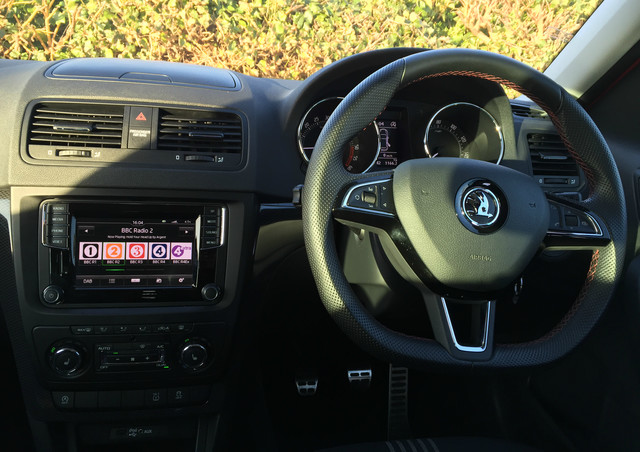
If you want something that has a bit more of a unique feel to it, then our Monte Carlo model is the way to go. Monte Carlo models basically build on the SE-L trim with black roof and door mirrors, a black front spoiler and LED rear lights. The interior gets the sporty treatment as well with stainless steel pedals, a leather steering wheel with red stitching, plus sports seats, carbon-look inserts and Monte Carlo badging splashed on its floor mats, door sills and bodywork.
Another trim that builds on the SE-L is the Outdoor Laurin & Klement model (from around £20,000), for those who may want more luxury but want to avoid being too ostentatious with a black and red paint job. The Outdoor L&K model adds the likes of a panoramic sunroof, full brown leather upholstery and a heated windscreen, plus park assist, unique L&K badging and an Amundsen touchscreen with sat-nav with DAB radio.
Options and accessories
But equipment options don’t stop there and on top of the standard features of each trim are optional extras and accessories. Depending on what trim you go for, you’ll be presented with a slightly different list of boxes to tick. Ticking some boxes can be much more costly than others though.
Useful and affordable extras include the likes of rear side airbags (£295), a driver fatigue sensor (£45), a double sided boot floor for extra versatility (£55), front seat ISOFIX fitting (£35) and a waste bin in the door panel (£20).
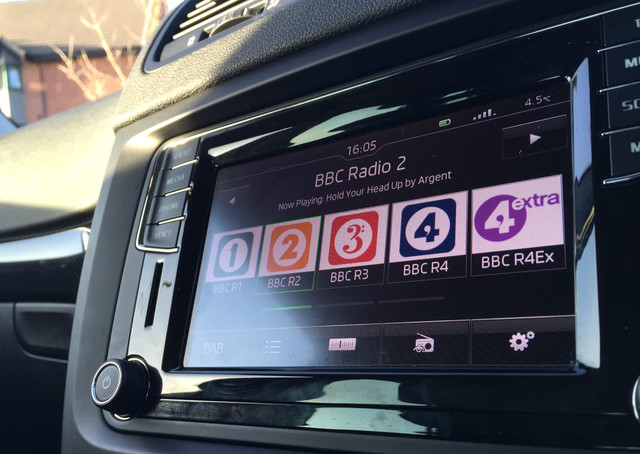
Do be careful of some of the more expensive options though, some of which act as more of an upgrade into the next trim up. These include a tow bar (£465), electrically-adjustable driver’s seat (£535), a panoramic sunroof (£1,150), keyless start system (£400) and the Amundsen sat-nav system (£600). Of course, whether you feel these options are necessary is entirely up to you, but just make sure you are aware of how much it is going to cost.
Residuals
Buying a model that you are going to enjoy is one thing, but what about when it comes to selling it on? In the long run, is it worth buying a more expensive model?
Well, if your car has lots of bells and whistles then it is more futureproofed and therefore in three or five years’ time it is going to be less dated.
Well, if your car has lots of bells and whistles then it is more futureproofed and therefore in three or five years’ time it is going to be less dated.
With regards to the Yeti for example, if you were to compare residuals for a 1.2-litre TSI S, 2.0-litre TDI SE, 2.0-litre TDI Monte Carlo – which you can do on our website – their estimated residual values after three years would be £7,800, £8,825 and £12,425 respectively. In short, if you were to pay an additional £7,000 over the Yeti S model and go for the Monte Carlo, it could end up being worth around £4,600 more after three years. Swings and roundabouts.
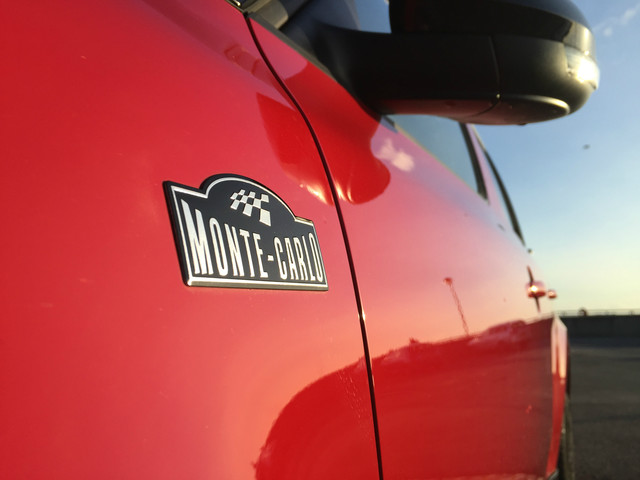
Fourth long-term test review: Costs and Maintenance
Richard Bush
Four months into having our Yeti, we have talked about how it drives, what the interior is like and how it performs from a power perspective. But what about the cost and maintenance side of things?
This includes its running costs and any other unexpected costs we may have encountered along the way. If you are considering buying a Yeti, then these figures should give you a good idea of how much you’ll need to budget.
Running costs
On our Yeti’s spec sheet the average mpg figure is quoted at 55.4mpg. As always, this average is a combination of both urban and outer urban mpg figures, which Skoda says are around 47.1mpg and 61.4mpg respectively.
It is important to differentiate these figures as most of our driving has be made up of motorway slogging. On average, we have been getting around the 44mpg mark. That isn’t far off the urban mpg figure of 47mpg, but it is a long way off the outer urban (motorway) figure of 61.4mpg.
Our average of 44 is much closer to the combined average figure of 55.4mpg. And the closest we have got to that is 51mpg on a particularly good run cross country.
Fuel price wise, it has been costing us an average of around £60 to fill up with fuel. If we crunch the figures, and consider that the Yeti’s fuel tank is 60 litres (60 litres = 13.2 gallons, 13.2 gallons x 44 = 581) we should be averaging around 580 miles with every full tank of fuel – whereas it is more like 500.
Tyres
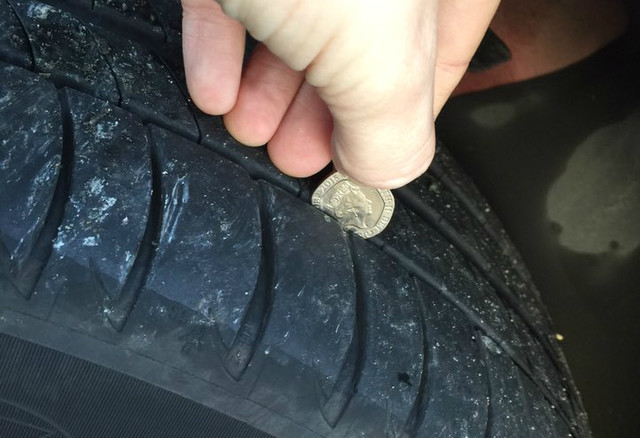
Fitted on our Monte Carlo model are meaty 17-inch ‘Origami’ alloy wheels, a clear upgrade from the standard 16-inch Helix alloy wheels fitted on entry-level Yeti S models.
So far – almost 10,000 miles later – its tyres still have plenty of tread depth. All four have passed the famous 20p tread depth test with flying colours and, to be honest, still look brand new.
Road tax
This figure is all rooted in what fuel type you use and how much your car is emitting. In the case of our Yeti Monte Carlo, it is a 2.0-litre diesel emitting 134g/km of CO2.
When it comes to road tax, 134g means the Yeti falls into VED band E – that equates to payable tax of £130 every 12 months.
What is this AdBlue I’ve heard all about?
Well known for being used in large vehicles like trucks, AdBlue is also used in some of the latest-generation VW Group vehicles – Skoda included.
So, what is AdBlue? Well, in a nutshell, AdBlue is a water-based liquid that helps engines be kinder to the environment by breaking down their NOx emissions into water vapour. This is done to ensure that the engine is complaint with EU6 emission regulations and is known as Selective Catalytic Reduction (SCR).
AdBlue is stored in its own tank – near the main fuel tank – and requires topping up now and again to allow the engine to run cleanly. If you let the AdBlue run dry and fail to top it up, you won’t be able to start your car. So you’ll need to take these reminders seriously. AdBlue will cost you upwards of around £15 for a 10 litre bottle – and it’s definitely worth shopping around for the best deal.
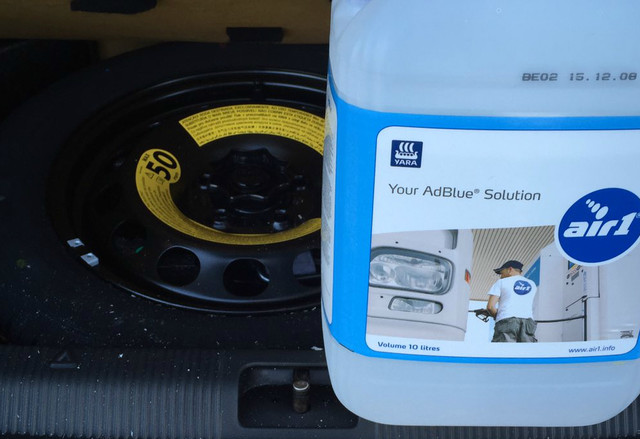
The only problem we have had with AdBlue in the Yeti is the frequency of which we have had to put it in. According to Volkswagen, 1.5-litres of AdBlue in a car of the Yeti’s size should equate to around 620 miles of driving. Astonishingly, we only got an alert to put in AdBlue after driving the car for around 8,000 miles!
However, after subsequently filling up its 8.5 litre AdBlue tank and driving another 1,000 miles, we were told that AdBlue would have to be added in another 1,200 miles. Now, going on figures from Volkswagen, a full tank of AdBlue in our Yeti should last around 3,300 miles. Judging by our calculations however, we are likely to have driven around 2,200 miles when we need to fill it up again. That is about 1,000 miles sooner than expected.
Of course, as with any average figure like this, there are certain variables that can play a part in range. Volkswagen says: “Many factors such as mileage covered, journey types, driving styles and environmental conditions can influence how much AdBlue is consumed.” We have been doing 150 miles plus motorway journeys regularly – which may have resulted in this.
Repairs
We haven’t had any problems with regards to repairs with our Yeti so far. The only thing that we have had to do from a maintenance perspective (aside from AdBlue of course) is top-up the oil after about 7,000 miles, and top up the washer fluid.
What about servicing?
The rule of thumb when it comes to servicing is that you should book your car in every 12 months, or every 10,000 - 12,000 miles – whichever comes first.
As with any car service, you can shop around to your heart’s content for a good servicing deal – however, for the purposes of our long termer, we have decided to check out how much it would cost at the hands of official Skoda technicians.
After putting our Yeti’s registration into Skoda’s site and checking out servicing costs, we found that our first service would cost £149 and our second £225. The site also gave us costs for things like front and rear brake pad repairs – both of which came out at £99.
We will be looking to take our Yeti for a service very soon – in another 500 miles or so.
Third long-term test review: Performance
Ryan McElroy
So far we’ve covered what the Yeti’s about and what it’s like to use as an everyday car, but what’s it like to drive? Depending on how much time you have, you might want to skip straight to the point, so here it is: awesome.
Offering fun family motoring at its purest, the Yeti Monte Carlo is for all intents and purposes a proper little sleeper. Call us childish, but we’d be lying if we said it isn’t a complete laugh to watch bystanders, mouths agape, point and wonder at what that little red box of a blur that just whizzed past could possibly be.
When we got it, box fresh from the Skoda factory, the engine was okay, but response was a little bit on the fudgy side. It’s to be expected, though, and after putting more than 3,000 miles on the clock in the space of a few months, it’s really grown into itself and the difference between when we got it and how it is now is remarkable.
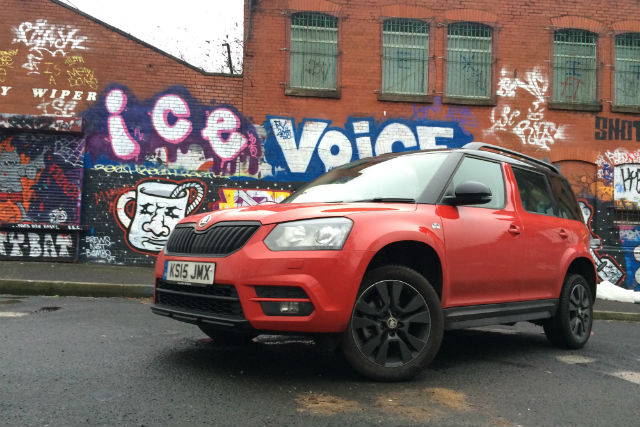
Lift the clutch, press the accelerator in and it fizzes into life, with peak power starting to kick in from just north of 2,000 revs and lasting all the way until redline at around 5,000rpm. With 148bhp on tap, it can feels quicker than the 9.1 second 0-62mph figure would suggest.
The gearing’s incredibly slick thanks to a smooth-shifting gearbox, while once the turbo kicks in it puffs you up straights and out of corners like a spitball from the end of a schoolboy’s peashooter.
V8 fans cover your eyes now, but engine noise is pretty nice as well, with a decent growl when it gets up to speed, but obviously if you’re looking for a proper firebreather you’re not going to buy a Yeti.
Still, it has a lot more going for it than just a plucky engine; no other car in its class drives quite as well as the Yeti Monte Carlo. Body roll isn’t non-existent but for a car of its type it’s genuinely amazing.
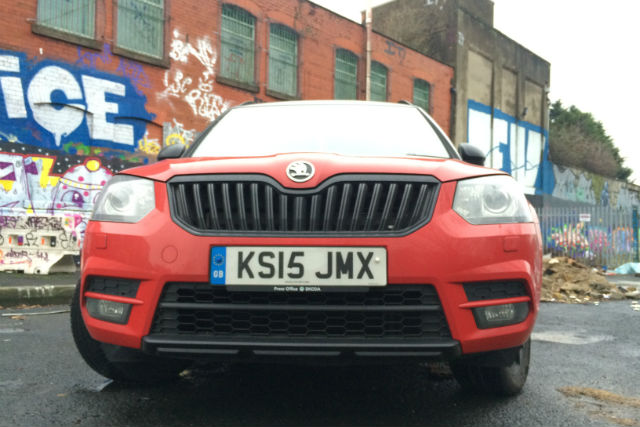
The only thing that comes close in our minds is the Suzuki Vitara S which, for all that we liked about it when we drove it, doesn’t feel like it comes anywhere close to the sheer joy that the Yeti exudes.
As we mentioned before, the Monte Carlo edition comes with just the right amount of speedy styling additions, with a perforated leather steering wheel that’s reminiscent of the first-gen Octavia vRS, plus red tinged sports seats to cement you in place and shiny chrome pedals.
Cool as it is, though, that flat-bottomed wheel, which seems to come on any car that’s even slightly lukewarm these days, is a little disconcerting when you’re going hand-over-hand round a hairpin and suddenly feel the wheel straighten out below you.
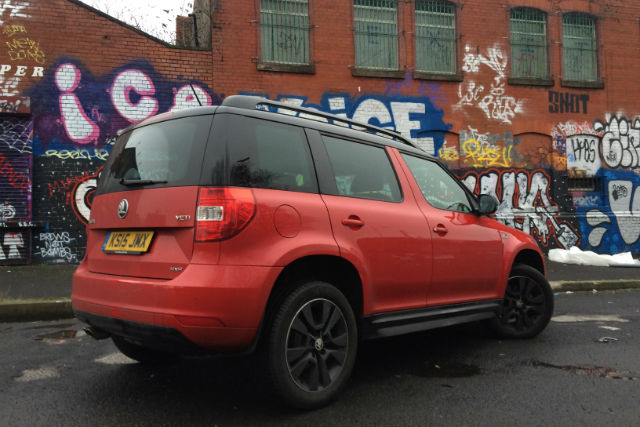
The suspension isn’t perfect, either, and it’s prone to being a little flump-like over bumps and potholes, but hey, this is a daily driver and not a track car. It’s comfortable, it’s meant to take your kids to school and not charge headlong down a rally stage.
And yet, with that said, while family-friendly suspension often means that a car handles like a bucket of jelly, it’s remarkably taut in the corners, almost to the point where you have to actively remember you’re driving a Yeti.
Is it hot hatch good? Definitely not, but we’d still have a hell of a time taking it out on a track day, that’s for sure. To sum up the Yeti’s performance it would be moreish; downright addictive, even. It’s the sort of car that you take to Tesco and forget the eggs and milk on purpose, just so that you have an excuse to drive it all the way back again.
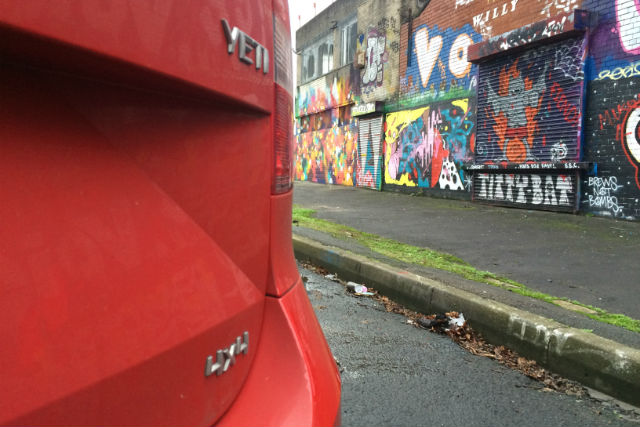
Maybe it’s the sheer novelty of the fact that it looks like a LEGO brick, all straight edges and primary colours, or maybe it’s just pure fun on its own accord. Whatever it is, we found ourselves putting our feet down a lot more than should ever be necessary in a car like this. It’s just too fun not to.
Every school run, every jaunt to the doctors or trip to Ikea is an absolute riot, because you’re buddied up with this jolly little partner like an eager puppy just waiting to be let off its lead.
Walk to the driveway and it looks up at you, wagging its tail and saying “Let’s play!” every time you key the ignition and push in the clutch. Best of all, unlike a real puppy it’ll never bite your hand, nor will it ever take a dump on your carpet.
Simple, well executed fun, that’s what the Skoda Yeti Monte Carlo is. The fact that it also happens to be an impressively capable family car? Well, that’s just the icing on the cake.
Second long-term test review: Practicality
Richard Bush
The best way to describe the Skoda Yeti is that it’s like a Swiss Army knife. It’s got tricks up its sleeve that make it one of the most flexible cars you can own, thanks to its plethora of ‘Simply Clever’ features.
The best way to describe the Skoda Yeti is that it’s like a Swiss Army knife. It’s got tricks up its sleeve that make it one of the most flexible cars you can own, thanks to its plethora of ‘Simply Clever’ features.
As part of our long termer write-up I have decided to talk though the Yeti’s interior and practicality.
So, let’s start with its cabin. The Yeti is clearly a Volkswagen Group vehicle, with a logical and un-complicated dashboard layout. There are also nice silver inlays around all the major buttons and toggles, a small touch which makes a big differences when it comes to up market feel. Sporty carbon fibre touches dotted around the dash live up to the ‘Monte Carlo’ name too.
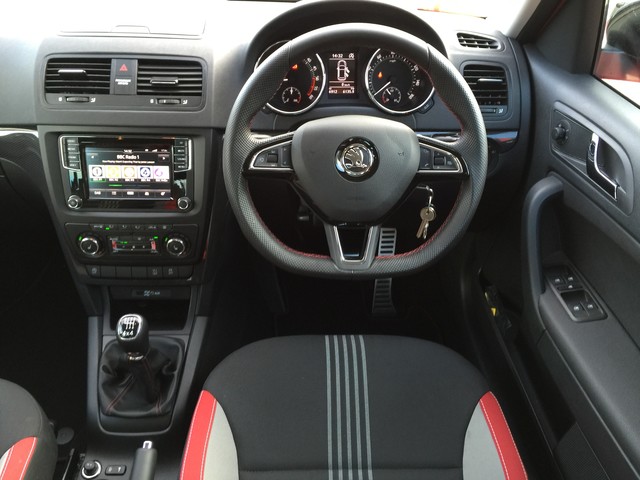
All the controls feel solid and anything that moves – be it the gearstick, lights and indicator toggles, steering-wheel controls – do so with reassuring solidity. Germanic engineering prevails.
The flat-bottomed steering wheel has a pleasing, chunky feel to it – and it too has cool silver inlays, as well as red stitching and a leather wrap that resembles the breathable material you get on driving gloves. The steering wheel does lack a bit of manoeuvrability though and at times I found that there wasn’t quite enough reach adjustment available. One small, but noticeable thing that came to my attention is that the indicator toggle is very close to the steering wheel on the left hand side, which meant I found myself reaching for it and missing it from time to time.
As part of the Monte Carlo trim, the Yeti gains sport’s seats, which come with a unique trim but ultimately lack bolstering. Not so much of an issue for short journeys, but it is certainly felt on long motorway journeys or when cornering.
On to the back seats. Unlike many crossover SUVs, rear leg and head room is not a problem. Thanks to the Yeti’s boxy shape there is tons of head room and you won’t have passengers complaining about leg room either, unless there is three abreast, then it’s a problem of foot well room as opposed to being cramped by the seats in front of you.
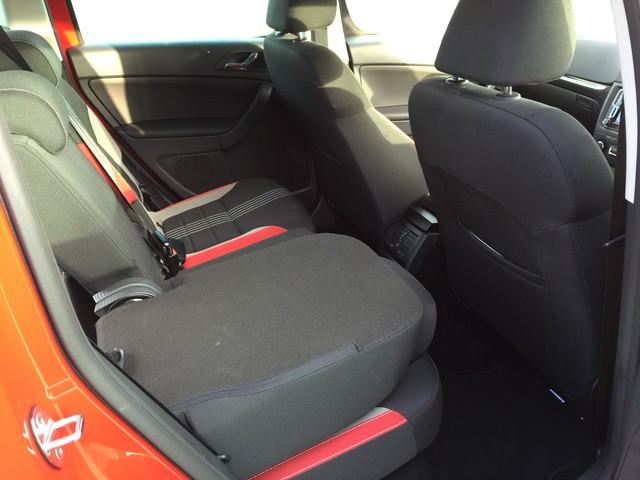
The party trick of the Yeti however is its Varioflex seats. Thanks to some clever construction, the rear seats of the Yeti can slide back and forth. Slide them back to give those in the rear more leg room or, if excess leg room isn’t needed, then slide them forward and give yourself more boot space. You can even recline the seats backwards to give your passengers a more relaxing ride on long trips.
The most impressive part about the back is the ability to completely remove the rear seats. After folding them forward like cinema seats, a small red lever allows the seats to be completely removed. This is incredibly easy to do, but I definitely recommend you trial it first before heading out with no prior-experience of using them. Taking these seats out makes for a total space of 1,760 litres and is ideal if you need to take hefty amounts of camping gear or several bikes with you. These seats are quite heavy though, so an extra pair of hands can be a good idea.
If you leave the seats in place but fold the middle seat down, you can utilise the cup holders built into the back of the seat.
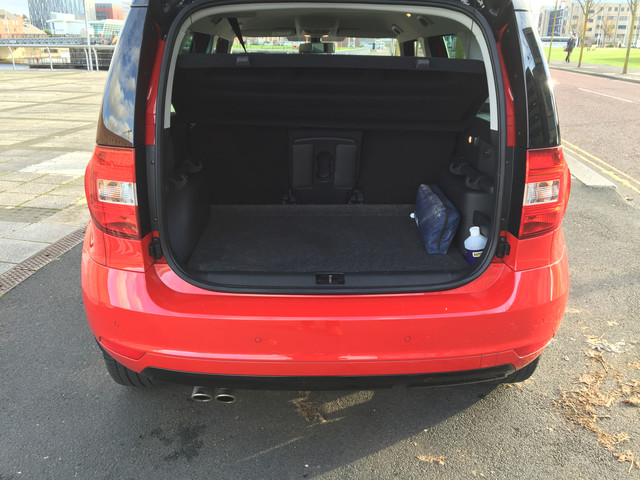
Come around to the boot and there is 416 litres on offer. That means that it is slightly smaller than the Nissan Qashqai (430 litres), but with the added practicality of the Varioflex seats, the Yeti definitely has the edge. The Yeti’s boot also has handy hooks either side of it, perfect if you put one or two shopping bags in the boot and don’t want them flying about the place.
First long-term test review: Introduction
Andy Goodwin
It’s arrived! For the next six months we’ll be lingering in Liverpool, passing through the Peak District and making many motorway journeys in a red and black Skoda Yeti Monte Carlo. Along the way, we’re hoping to find out what has made this originally-named crossover a smash hit, and if you should take the plunge or give this sasquatch a wide berth.
So, firstly, what is a Yeti of the vehicular kind? First released in 2009, it was Skoda’s first-ever crossover, with beefed up suspension, a raised seating position and the option of four-wheel drive.
But, what really impressed the motoring press was its fun handling and performance. Skoda’s engineers seemed to have sprinkled some magic fairy dust over the chassis, making this family car surprisingly entertaining to drive, with few handling compromises compared with a sleek hatchback.
But, compared to something like a Focus or Astra, the Yeti also has plenty of advantages. A boxy shape means practicality is extremely good, and the rugged looks of the Yeti have also struck a chord with many buyers. Over a quarter of a million Yetis have been built, with around 30,000 sold in the UK.
In 2014 the Yeti was facelifted and given a new look to match other models in the line-up, with sharper lines and a tweaked interior.
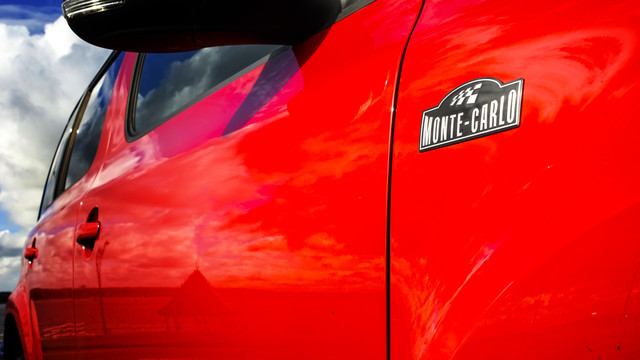
So what’s the spec of ‘our’ car? Well, it’s a Monte Carlo special edition, which means it gets a contrasting black roof and red paintwork, along with a black grille, rear diffuser, door mirrors and 17-inch ‘Origami’ alloy wheels. It’s certainly a striking combination, but if red isn’t your colour, the Monte Carlo is also available in black, white, silver or grey, all keeping the black roof design.
And, the makeover doesn’t end there. Neat bi-xenon headlights, a three-spoke ‘Supersport’ steering wheel, sports seats with unique Monte Carlo upholstery and some badges around the car help set it apart. It certainly looks good, and we think the black roof and window pillars make the Yeti look lower and a little sportier.
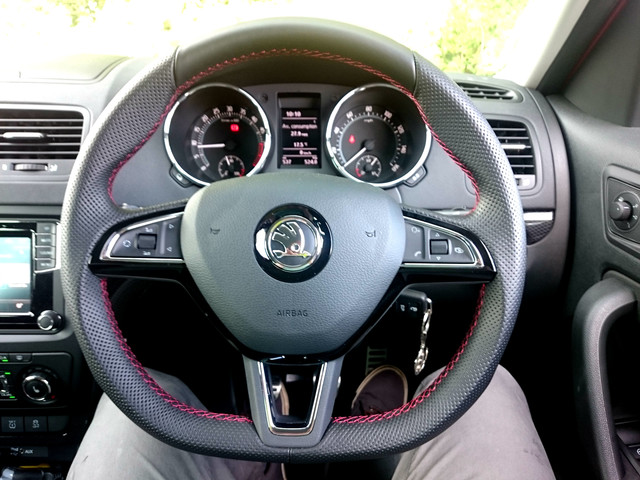
The Yeti Monte Carlo comes as standard with a new Euro 6 compliant 148bhp, 2.0-litre diesel and four-wheel drive, but you do have the option of a six-speed manual gearbox or a DSG automatic. With the former fitted it costs £24,375, while the automatic is available for £25,485. This puts the Yeti up against a whole heap of rivals, including the Nissan Qashqai, Renault Kadjar and Hyundai Tucson.
Arriving with just 181 miles on the odometer, the Yeti felt like it had a very narrow power band. Use too few revs to pull away at car park speeds and it could stall with little warning, which happened a few times until we got the hang of it. We were also careful to avoid hard acceleration until the engine had a few more miles under its belt.
Running a car in isn’t the chore it used to be, but we also avoided using the cruise control, as the manual warns against keeping the engine at constant revs when it’s brand new.
But, with car launches beckoning us to locations and airports across the UK, it wasn’t long until a couple of thousand miles had already disappeared under the Yeti’s wheels. The result? Its engine already feels punchier, with a much broader spread of power, and the gearbox is getting slicker too. So, the Yeti is coming alive, and already putting a smile on our faces.
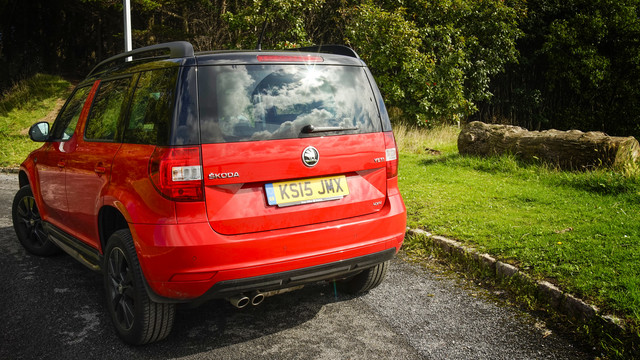
Comments
Post a Comment